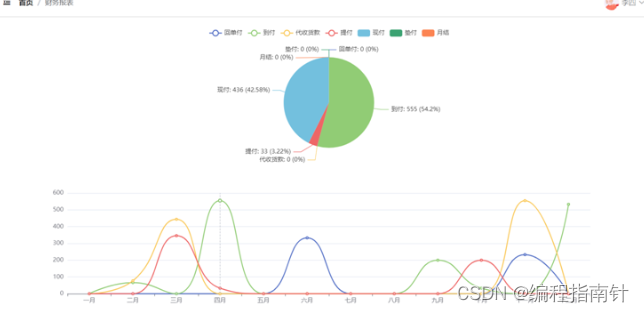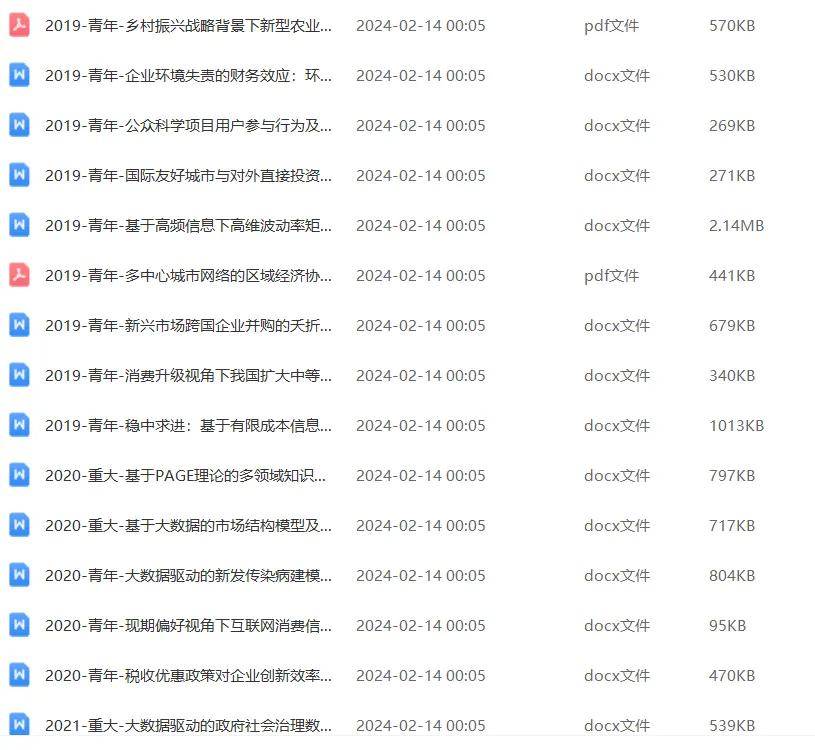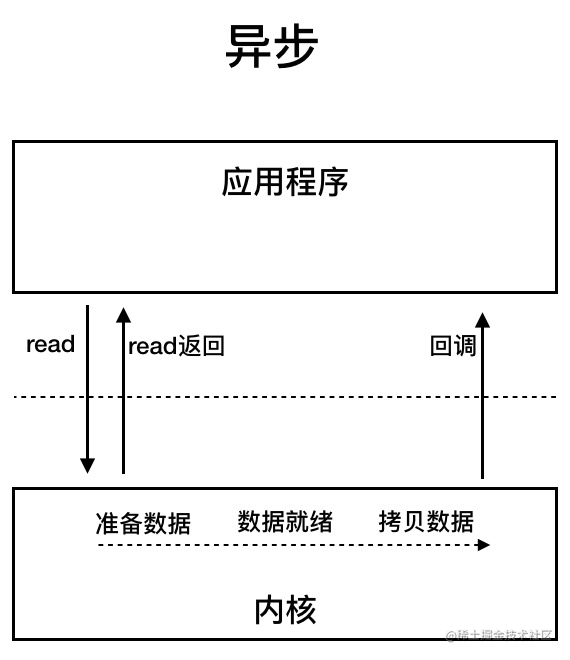Opensearch集群部署【docker、服务器、Helm多种部署方式】
操作系统兼容性
我们建议在 Red Hat Enterprise Linux (RHEL) 或使用systemd的基于 Debian 的 Linux 发行版上安装 OpenSearch ,例如 CentOS、Amazon Linux 2 和 Ubuntu Long-Term Support (LTS)。OpenSearch 应该适用于大多数 Linux 发行版,但我们只测试了少数几个。对于任何版本的 OpenSearch,我们建议使用 RHEL 7 或 8、CentOS 7 或 8、Amazon Linux 2、Ubuntu 16.04、18.04 或 20.04。
Java 兼容性
适用于 Linux 的 OpenSearch 发行版在目录中附带了兼容的Adoptium JDK版本的 Java 。jdk要查找 JDK 版本,请运行./jdk/bin/java -version. 例如,OpenSearch 1.0.0 tarball 随附 Java 15.0.1+9(非 LTS),OpenSearch 1.3.0 随附 Java 11.0.14.1+1 (LTS),OpenSearch 2.0.0 随附 Java 17.0.2 +8 (LTS)。OpenSearch 使用所有兼容的 Java 版本进行了测试。
| OpenSearch版本 | 兼容的 Java 版本 | 需要 Java 版本 |
|---|---|---|
| 1.0 - 1.2.x | 11, 15 | 15.0.1+9 |
| 1.3.x | 8, 11, 14 | 11.0.14.1+1 |
| 2.0.0 | 11, 17 | 17.0.2+8 |
docker安装
创建docker-compose.yml
version: '3'
services:opensearch-node1:image: opensearchproject/opensearch:2.2.0container_name: opensearch-node1environment:- cluster.name=opensearch-cluster- node.name=opensearch-node1- discovery.seed_hosts=opensearch-node1,opensearch-node2- cluster.initial_master_nodes=opensearch-node1,opensearch-node2- bootstrap.memory_lock=true # along with the memlock settings below, disables swapping- "OPENSEARCH_JAVA_OPTS=-Xms512m -Xmx512m" # minimum and maximum Java heap size, recommend setting both to 50% of system RAMulimits:memlock:soft: -1hard: -1nofile:soft: 65536 # maximum number of open files for the OpenSearch user, set to at least 65536 on modern systemshard: 65536volumes:- opensearch-data1:/usr/share/opensearch/dataports:- 9200:9200- 9600:9600 # required for Performance Analyzernetworks:- opensearch-netopensearch-node2:image: opensearchproject/opensearch:2.2.0container_name: opensearch-node2environment:- cluster.name=opensearch-cluster- node.name=opensearch-node2- discovery.seed_hosts=opensearch-node1,opensearch-node2- cluster.initial_master_nodes=opensearch-node1,opensearch-node2- bootstrap.memory_lock=true- "OPENSEARCH_JAVA_OPTS=-Xms512m -Xmx512m"ulimits:memlock:soft: -1hard: -1nofile:soft: 65536hard: 65536volumes:- opensearch-data2:/usr/share/opensearch/datanetworks:- opensearch-netopensearch-dashboards:image: opensearchproject/opensearch-dashboards:2.2.0container_name: opensearch-dashboardsports:- 5601:5601expose:- "5601"environment:OPENSEARCH_HOSTS: '["https://opensearch-node1:9200","https://opensearch-node2:9200"]' # must be a string with no spaces when specified as an environment variablenetworks:- opensearch-netvolumes:opensearch-data1:opensearch-data2:networks:opensearch-net:启动集群
docker-compose up
启动日志

看到以下信息并且日志没明显error说明启动成功

查看集群节点

通过opensearch-dashboard查看

访问服务器的5601端口
用户名密码为admin admin

进入opensearch-dashboard页面

停止集群
docker-compose down
停止集群并删除所有数据信息
docker-compose down -v
裸服务器安装
设计集群的方法有很多种组合。
下图显示了一个基本架构,其中包括一个四节点集群,该集群具有一个集群管理器节点、一个协调节点和两个数据节点。
更多节点信息请参照配置详解。
集群架构

服务器规划
| IP地址 | 配置 | 节点 |
|---|---|---|
| 172.21.84.119 | 2C 4G 100G SATA | Cluster manager data ingest |
| 172.21.84.120 | 2C 4G 100G SATA | Cluster manager data ingest |
| 172.21.84.121 | 2C 4G 100G SATA | Cluster manager data ingest |
进群之间请确保以下端口是连通的。
需要为 OpenSearch 组件打开以下端口。
| 端口号 | 开放搜索组件 |
|---|---|
| 443 | AWS OpenSearch Service 中的 OpenSearch 仪表板,具有传输中加密 (TLS) |
| 5601 | 开放搜索仪表板 |
| 9200 | 开放搜索 REST API |
| 9250 | 跨集群搜索 |
| 9300 | 节点通信和传输 |
| 9600 | 性能分析器 |
安装步骤
- 请在所有节点安装单机版opensearch并测试启动成功(安装步骤请参阅–单机版安装)
- 删除对应单机启动opensearch的日志和数据文件目录 data logs
- 修改配置文件
172.21.84.119 配置文件
cluster.name: bigdata
node.name: master01
node.roles: [cluster_manager ,data, ingest]
path.data: /data/opensearch/opensearch-2.2.0/data
path.logs: /data/opensearch/opensearch-2.2.0/logs
network.host: 172.21.84.119
http.port: 9200
discovery.seed_hosts: ["master01", "node01", "node02"]
cluster.initial_cluster_manager_nodes: ["master01", "node01", "node02"]
plugins.security.ssl.transport.pemcert_filepath: esnode.pem
plugins.security.ssl.transport.pemkey_filepath: esnode-key.pem
plugins.security.ssl.transport.pemtrustedcas_filepath: root-ca.pem
plugins.security.ssl.transport.enforce_hostname_verification: false
plugins.security.ssl.http.enabled: true
plugins.security.ssl.http.pemcert_filepath: esnode.pem
plugins.security.ssl.http.pemkey_filepath: esnode-key.pem
plugins.security.ssl.http.pemtrustedcas_filepath: root-ca.pem
plugins.security.allow_unsafe_democertificates: true
plugins.security.allow_default_init_securityindex: true
plugins.security.authcz.admin_dn:
CN=kirk,OU=client,O=client,L=test, C=de
plugins.security.audit.type: internal_opensearch
plugins.security.enable_snapshot_restore_privilege: true
plugins.security.check_snapshot_restore_write_privileges: true
plugins.security.restapi.roles_enabled: ["all_access", "security_rest_api_access"]
plugins.security.system_indices.enabled: true
plugins.security.system_indices.indices: [".plugins-ml-model", ".plugins-ml-task", ".opendistro-alerting-config", ".opendistro-alerting-alert*", ".opendistro-anomaly-results*", ".opendistro-anomaly-detector*", ".opendistro-anomaly-checkpoints", ".opendistro-anomaly-detection-state", ".opendistro-reports-", ".opensearch-notifications-", ".opensearch-notebooks", ".opensearch-observability", ".opendistro-asynchronous-search-response*", ".replication-metadata-store"]
node.max_local_storage_nodes: 3
172.21.84.120 配置文件
注: 相同配置不再展示
cluster.name: bigdata
node.name: master01
node.roles: [cluster_manager ,data, ingest]
path.data: /data/opensearch/opensearch-2.2.0/data
path.logs: /data/opensearch/opensearch-2.2.0/logs
network.host: 172.21.84.120
172.21.84.121 配置文件
cluster.name: bigdata
node.name: master01
node.roles: [cluster_manager ,data, ingest]
path.data: /data/opensearch/opensearch-2.2.0/data
path.logs: /data/opensearch/opensearch-2.2.0/logs
network.host: 172.21.84.121
依次启动三台openserach
su - opensearch -c "/data/opensearch/opensearch-2.2.0/bin/opensearch"
看到如下信息,集群创建成功

查看集群
查看节点信息

查看集群健康状态

至此裸金属版部署完成
Helm安装
官方安装
请确保k8s集群安装了helm命令,且可以链接外网。默认 Helm 部署一个三节点集群。我们建议您为此部署至少有 8 GiB 的可用内存。
例如,如果可用内存少于 4 GiB,可能会部署会失败。
版本要求
- Kubernetes >= 1.14
- Helm >= 2.17.0
Kubernetes 中部署 NFS-Subdir-External-Provisioner 为 NFS 提供动态分配卷

并且自动绑定pv,pvc,若绑定失败需执行
kubectl patch storageclass nfs-storage -p '{"metadata": {"annotations":{"storageclass.kubernetes.io/is-default-class":"true"}}}'
安装步骤
- 将opensearch helm-charts 存储库添加到 Helm:
helm repo add opensearch https://opensearch-project.github.io/helm-charts/

- 从图表存储库本地更新可用源:
helm repo update

- 要搜索与 OpenSearch 相关的 Helm 图表
helm search repo opensearch

- 部署 OpenSearch
helm install my-deployment opensearch/opensearch

查看部署的pod

确认节点运行状态

卸载opensearch

运行
helm delete my-deployment
自定义安装

其中data节点也可拆分出来本文不做展示。
openserach-master.yaml
---
clusterName: "opensearch-cluster"
nodeGroup: "master"# If discovery.type in the opensearch configuration is set to "single-node",
# this should be set to "true"
# If "true", replicas will be forced to 1
singleNode: false# The service that non master groups will try to connect to when joining the cluster
# This should be set to clusterName + "-" + nodeGroup for your master group
masterService: "opensearch-cluster-master"# OpenSearch roles that will be applied to this nodeGroup
# These will be set as environment variable "node.roles". E.g. node.roles=master,ingest,data,remote_cluster_client
roles:- master- ingest- datareplicas: 3# if not set, falls back to parsing .Values.imageTag, then .Chart.appVersion.
majorVersion: ""global:# Set if you want to change the default docker registry, e.g. a private one.dockerRegistry: ""# Allows you to add any config files in {{ .Values.opensearchHome }}/config
opensearchHome: /usr/share/opensearch
# such as opensearch.yml and log4j2.properties
config:# Values must be YAML literal style scalar / YAML multiline string.# <filename>: |# <formatted-value(s)># log4j2.properties: |# status = error## appender.console.type = Console# appender.console.name = console# appender.console.layout.type = PatternLayout# appender.console.layout.pattern = [%d{ISO8601}][%-5p][%-25c{1.}] [%node_name]%marker %m%n## rootLogger.level = info# rootLogger.appenderRef.console.ref = consoleopensearch.yml: |cluster.name: opensearch-cluster# Bind to all interfaces because we don't know what IP address Docker will assign to us.network.host: 0.0.0.0# Setting network.host to a non-loopback address enables the annoying bootstrap checks. "Single-node" mode disables them again.# Implicitly done if ".singleNode" is set to "true".# discovery.type: single-node# Start OpenSearch Security Demo Configuration# WARNING: revise all the lines below before you go into productionplugins:security:ssl:transport:pemcert_filepath: esnode.pempemkey_filepath: esnode-key.pempemtrustedcas_filepath: root-ca.pemenforce_hostname_verification: falsehttp:enabled: truepemcert_filepath: esnode.pempemkey_filepath: esnode-key.pempemtrustedcas_filepath: root-ca.pemallow_unsafe_democertificates: trueallow_default_init_securityindex: trueauthcz:admin_dn:- CN=kirk,OU=client,O=client,L=test,C=deaudit.type: internal_opensearchenable_snapshot_restore_privilege: truecheck_snapshot_restore_write_privileges: truerestapi:roles_enabled: ["all_access", "security_rest_api_access"]system_indices:enabled: trueindices:[".opendistro-alerting-config",".opendistro-alerting-alert*",".opendistro-anomaly-results*",".opendistro-anomaly-detector*",".opendistro-anomaly-checkpoints",".opendistro-anomaly-detection-state",".opendistro-reports-*",".opendistro-notifications-*",".opendistro-notebooks",".opendistro-asynchronous-search-response*",]######## End OpenSearch Security Demo Configuration ######### log4j2.properties:# Extra environment variables to append to this nodeGroup
# This will be appended to the current 'env:' key. You can use any of the kubernetes env
# syntax here
extraEnvs: []
# - name: MY_ENVIRONMENT_VAR
# value: the_value_goes_here# Allows you to load environment variables from kubernetes secret or config map
envFrom: []
# - secretRef:
# name: env-secret
# - configMapRef:
# name: config-map# A list of secrets and their paths to mount inside the pod
# This is useful for mounting certificates for security and for mounting
# the X-Pack license
secretMounts: []hostAliases: []
# - ip: "127.0.0.1"
# hostnames:
# - "foo.local"
# - "bar.local"image:repository: "opensearchproject/opensearch"# override image tag, which is .Chart.AppVersion by defaulttag: ""pullPolicy: "IfNotPresent"podAnnotations: {}# iam.amazonaws.com/role: es-cluster# additionals labels
labels: {}opensearchJavaOpts: "-Xmx512M -Xms512M"resources:requests:cpu: "500m"memory: "100Mi"initResources: {}
# limits:
# cpu: "25m"
# memory: "128Mi"
# requests:
# cpu: "25m"
# memory: "128Mi"sidecarResources: {}
# limits:
# cpu: "25m"
# memory: "128Mi"
# requests:
# cpu: "25m"
# memory: "128Mi"networkHost: "0.0.0.0"rbac:create: falseserviceAccountAnnotations: {}serviceAccountName: ""podSecurityPolicy:create: falsename: ""spec:privileged: truefsGroup:rule: RunAsAnyrunAsUser:rule: RunAsAnyseLinux:rule: RunAsAnysupplementalGroups:rule: RunAsAnyvolumes:- secret- configMap- persistentVolumeClaim- emptyDirpersistence:enabled: true# Set to false to disable the `fsgroup-volume` initContainer that will update permissions on the persistent disk.enableInitChown: true# override image, which is busybox by default# image: busybox# override image tag, which is latest by default# imageTag:labels:# Add default labels for the volumeClaimTemplate of the StatefulSetenabled: false# OpenSearch Persistent Volume Storage Class# If defined, storageClassName: <storageClass># If set to "-", storageClassName: "", which disables dynamic provisioning# If undefined (the default) or set to null, no storageClassName spec is# set, choosing the default provisioner. (gp2 on AWS, standard on# GKE, AWS & OpenStack)## storageClass: "-"accessModes:- ReadWriteOncesize: 5Giannotations: {}extraVolumes: []# - name: extras# emptyDir: {}extraVolumeMounts: []# - name: extras# mountPath: /usr/share/extras# readOnly: trueextraContainers: []# - name: do-something# image: busybox# command: ['do', 'something']extraInitContainers: []# - name: do-somethings# image: busybox# command: ['do', 'something']# This is the PriorityClass settings as defined in
# https://kubernetes.io/docs/concepts/configuration/pod-priority-preemption/#priorityclass
priorityClassName: ""# By default this will make sure two pods don't end up on the same node
# Changing this to a region would allow you to spread pods across regions
antiAffinityTopologyKey: "kubernetes.io/hostname"# Hard means that by default pods will only be scheduled if there are enough nodes for them
# and that they will never end up on the same node. Setting this to soft will do this "best effort"
antiAffinity: "soft"# This is the node affinity settings as defined in
# https://kubernetes.io/docs/concepts/configuration/assign-pod-node/#node-affinity-beta-feature
nodeAffinity: {}# This is the pod topology spread constraints
# https://kubernetes.io/docs/concepts/workloads/pods/pod-topology-spread-constraints/
topologySpreadConstraints: []# The default is to deploy all pods serially. By setting this to parallel all pods are started at
# the same time when bootstrapping the cluster
podManagementPolicy: "Parallel"# The environment variables injected by service links are not used, but can lead to slow OpenSearch boot times when
# there are many services in the current namespace.
# If you experience slow pod startups you probably want to set this to `false`.
enableServiceLinks: trueprotocol: https
httpPort: 9200
transportPort: 9300service:labels: {}labelsHeadless: {}headless:annotations: {}type: ClusterIPnodePort: ""annotations: {}httpPortName: httptransportPortName: transportloadBalancerIP: ""loadBalancerSourceRanges: []externalTrafficPolicy: ""updateStrategy: RollingUpdate# This is the max unavailable setting for the pod disruption budget
# The default value of 1 will make sure that kubernetes won't allow more than 1
# of your pods to be unavailable during maintenance
maxUnavailable: 1podSecurityContext:fsGroup: 1000runAsUser: 1000securityContext:capabilities:drop:- ALL# readOnlyRootFilesystem: truerunAsNonRoot: truerunAsUser: 1000securityConfig:enabled: truepath: "/usr/share/opensearch/plugins/opensearch-security/securityconfig"actionGroupsSecret:configSecret:internalUsersSecret:rolesSecret:rolesMappingSecret:tenantsSecret:# The following option simplifies securityConfig by using a single secret and# specifying the config files as keys in the secret instead of creating# different secrets for for each config file.# Note that this is an alternative to the individual secret configuration# above and shouldn't be used if the above secrets are used.config:# There are multiple ways to define the configuration here:# * If you define anything under data, the chart will automatically create# a secret and mount it.# * If you define securityConfigSecret, the chart will assume this secret is# created externally and mount it.# * It is an error to define both data and securityConfigSecret.securityConfigSecret: ""dataComplete: truedata: {}# config.yml: |-# internal_users.yml: |-# roles.yml: |-# roles_mapping.yml: |-# action_groups.yml: |-# tenants.yml: |-# How long to wait for opensearch to stop gracefully
terminationGracePeriod: 120sysctlVmMaxMapCount: 262144startupProbe:tcpSocket:port: 9200initialDelaySeconds: 5periodSeconds: 10timeoutSeconds: 3failureThreshold: 30
readinessProbe:tcpSocket:port: 9200periodSeconds: 5timeoutSeconds: 3failureThreshold: 3## Use an alternate scheduler.
## ref: https://kubernetes.io/docs/tasks/administer-cluster/configure-multiple-schedulers/
##
schedulerName: ""imagePullSecrets: []
nodeSelector: {}
tolerations: []# Enabling this will publically expose your OpenSearch instance.
# Only enable this if you have security enabled on your cluster
ingress:enabled: false# For Kubernetes >= 1.18 you should specify the ingress-controller via the field ingressClassName# See https://kubernetes.io/blog/2020/04/02/improvements-to-the-ingress-api-in-kubernetes-1.18/#specifying-the-class-of-an-ingress# ingressClassName: nginxannotations: {}# kubernetes.io/ingress.class: nginx# kubernetes.io/tls-acme: "true"path: /hosts:- chart-example.localtls: []# - secretName: chart-example-tls# hosts:# - chart-example.localnameOverride: ""
fullnameOverride: ""masterTerminationFix: falselifecycle: {}# preStop:# exec:# command: ["/bin/sh", "-c", "echo Hello from the postStart handler > /usr/share/message"]# postStart:# exec:# command:# - bash# - -c# - |# #!/bin/bash# # Add a template to adjust number of shards/replicas1# TEMPLATE_NAME=my_template# INDEX_PATTERN="logstash-*"# SHARD_COUNT=8# REPLICA_COUNT=1# ES_URL=http://localhost:9200# while [[ "$(curl -s -o /dev/null -w '%{http_code}\n' $ES_URL)" != "200" ]]; do sleep 1; done# curl -XPUT "$ES_URL/_template/$TEMPLATE_NAME" -H 'Content-Type: application/json' -d'{"index_patterns":['\""$INDEX_PATTERN"\"'],"settings":{"number_of_shards":'$SHARD_COUNT',"number_of_replicas":'$REPLICA_COUNT'}}'keystore: []
# To add secrets to the keystore:
# - secretName: opensearch-encryption-keynetworkPolicy:create: false## Enable creation of NetworkPolicy resources. Only Ingress traffic is filtered for now.## In order for a Pod to access OpenSearch, it needs to have the following label:## {{ template "uname" . }}-client: "true"## Example for default configuration to access HTTP port:## opensearch-master-http-client: "true"## Example for default configuration to access transport port:## opensearch-master-transport-client: "true"http:enabled: false# Deprecated
# please use the above podSecurityContext.fsGroup instead
fsGroup: ""## Set optimal sysctl's. This requires privilege. Can be disabled if
## the system has already been preconfigured. (Ex: https://www.elastic.co/guide/en/elasticsearch/reference/current/vm-max-map-count.html)
## Also see: https://kubernetes.io/docs/tasks/administer-cluster/sysctl-cluster/
sysctl:enabled: false## Enable to add 3rd Party / Custom plugins not offered in the default OpenSearch image.
plugins:enabled: falseinstallList: []# - example-fake-plugin# -- Array of extra K8s manifests to deploy
extraObjects: []# - apiVersion: secrets-store.csi.x-k8s.io/v1# kind: SecretProviderClass# metadata:# name: argocd-secrets-store# spec:# provider: aws# parameters:# objects: |# - objectName: "argocd"# objectType: "secretsmanager"# jmesPath:# - path: "client_id"# objectAlias: "client_id"# - path: "client_secret"# objectAlias: "client_secret"# secretObjects:# - data:# - key: client_id# objectName: client_id# - key: client_secret# objectName: client_secret# secretName: argocd-secrets-store# type: Opaque# labels:# app.kubernetes.io/part-of: argocd
安装命令
注:version并非opensearch版本,而是CHART VERSION

helm install opensearch-master -f openserach-master.yaml --version 2.5.1 opensearch/opensearch
opensearch-client.yaml
---
clusterName: "opensearch-cluster"
nodeGroup: "client"# If discovery.type in the opensearch configuration is set to "single-node",
# this should be set to "true"
# If "true", replicas will be forced to 1
singleNode: false# The service that non master groups will try to connect to when joining the cluster
# This should be set to clusterName + "-" + nodeGroup for your master group
masterService: "opensearch-cluster-master"# OpenSearch roles that will be applied to this nodeGroup
# These will be set as environment variable "node.roles". E.g. node.roles=master,ingest,data,remote_cluster_client
roles:- remote_cluster_clientreplicas: 2# if not set, falls back to parsing .Values.imageTag, then .Chart.appVersion.
majorVersion: ""global:# Set if you want to change the default docker registry, e.g. a private one.dockerRegistry: ""# Allows you to add any config files in {{ .Values.opensearchHome }}/config
opensearchHome: /usr/share/opensearch
# such as opensearch.yml and log4j2.properties
config:# Values must be YAML literal style scalar / YAML multiline string.# <filename>: |# <formatted-value(s)># log4j2.properties: |# status = error## appender.console.type = Console# appender.console.name = console# appender.console.layout.type = PatternLayout# appender.console.layout.pattern = [%d{ISO8601}][%-5p][%-25c{1.}] [%node_name]%marker %m%n## rootLogger.level = info# rootLogger.appenderRef.console.ref = consoleopensearch.yml: |cluster.name: opensearch-cluster# Bind to all interfaces because we don't know what IP address Docker will assign to us.network.host: 0.0.0.0# Setting network.host to a non-loopback address enables the annoying bootstrap checks. "Single-node" mode disables them again.# Implicitly done if ".singleNode" is set to "true".# discovery.type: single-node# Start OpenSearch Security Demo Configuration# WARNING: revise all the lines below before you go into productionplugins:security:ssl:transport:pemcert_filepath: esnode.pempemkey_filepath: esnode-key.pempemtrustedcas_filepath: root-ca.pemenforce_hostname_verification: falsehttp:enabled: truepemcert_filepath: esnode.pempemkey_filepath: esnode-key.pempemtrustedcas_filepath: root-ca.pemallow_unsafe_democertificates: trueallow_default_init_securityindex: trueauthcz:admin_dn:- CN=kirk,OU=client,O=client,L=test,C=deaudit.type: internal_opensearchenable_snapshot_restore_privilege: truecheck_snapshot_restore_write_privileges: truerestapi:roles_enabled: ["all_access", "security_rest_api_access"]system_indices:enabled: trueindices:[".opendistro-alerting-config",".opendistro-alerting-alert*",".opendistro-anomaly-results*",".opendistro-anomaly-detector*",".opendistro-anomaly-checkpoints",".opendistro-anomaly-detection-state",".opendistro-reports-*",".opendistro-notifications-*",".opendistro-notebooks",".opendistro-asynchronous-search-response*",]######## End OpenSearch Security Demo Configuration ######### log4j2.properties:# Extra environment variables to append to this nodeGroup
# This will be appended to the current 'env:' key. You can use any of the kubernetes env
# syntax here
extraEnvs: []
# - name: MY_ENVIRONMENT_VAR
# value: the_value_goes_here# Allows you to load environment variables from kubernetes secret or config map
envFrom: []
# - secretRef:
# name: env-secret
# - configMapRef:
# name: config-map# A list of secrets and their paths to mount inside the pod
# This is useful for mounting certificates for security and for mounting
# the X-Pack license
secretMounts: []hostAliases: []
# - ip: "127.0.0.1"
# hostnames:
# - "foo.local"
# - "bar.local"image:repository: "opensearchproject/opensearch"# override image tag, which is .Chart.AppVersion by defaulttag: ""pullPolicy: "IfNotPresent"podAnnotations: {}# iam.amazonaws.com/role: es-cluster# additionals labels
labels: {}opensearchJavaOpts: "-Xmx512M -Xms512M"resources:requests:cpu: "500m"memory: "100Mi"initResources: {}
# limits:
# cpu: "25m"
# memory: "128Mi"
# requests:
# cpu: "25m"
# memory: "128Mi"sidecarResources: {}
# limits:
# cpu: "25m"
# memory: "128Mi"
# requests:
# cpu: "25m"
# memory: "128Mi"networkHost: "0.0.0.0"rbac:create: falseserviceAccountAnnotations: {}serviceAccountName: ""podSecurityPolicy:create: falsename: ""spec:privileged: truefsGroup:rule: RunAsAnyrunAsUser:rule: RunAsAnyseLinux:rule: RunAsAnysupplementalGroups:rule: RunAsAnyvolumes:- secret- configMap- persistentVolumeClaim- emptyDirpersistence:enabled: false# Set to false to disable the `fsgroup-volume` initContainer that will update permissions on the persistent disk.enableInitChown: false# override image, which is busybox by default# image: busybox# override image tag, which is latest by default# imageTag:labels:# Add default labels for the volumeClaimTemplate of the StatefulSetenabled: false# OpenSearch Persistent Volume Storage Class# If defined, storageClassName: <storageClass># If set to "-", storageClassName: "", which disables dynamic provisioning# If undefined (the default) or set to null, no storageClassName spec is# set, choosing the default provisioner. (gp2 on AWS, standard on# GKE, AWS & OpenStack)## storageClass: "-"accessModes:- ReadWriteOncesize: 1Giannotations: {}extraVolumes: []# - name: extras# emptyDir: {}extraVolumeMounts: []# - name: extras# mountPath: /usr/share/extras# readOnly: trueextraContainers: []# - name: do-something# image: busybox# command: ['do', 'something']extraInitContainers: []# - name: do-somethings# image: busybox# command: ['do', 'something']# This is the PriorityClass settings as defined in
# https://kubernetes.io/docs/concepts/configuration/pod-priority-preemption/#priorityclass
priorityClassName: ""# By default this will make sure two pods don't end up on the same node
# Changing this to a region would allow you to spread pods across regions
antiAffinityTopologyKey: "kubernetes.io/hostname"# Hard means that by default pods will only be scheduled if there are enough nodes for them
# and that they will never end up on the same node. Setting this to soft will do this "best effort"
antiAffinity: "soft"# This is the node affinity settings as defined in
# https://kubernetes.io/docs/concepts/configuration/assign-pod-node/#node-affinity-beta-feature
nodeAffinity: {}# This is the pod topology spread constraints
# https://kubernetes.io/docs/concepts/workloads/pods/pod-topology-spread-constraints/
topologySpreadConstraints: []# The default is to deploy all pods serially. By setting this to parallel all pods are started at
# the same time when bootstrapping the cluster
podManagementPolicy: "Parallel"# The environment variables injected by service links are not used, but can lead to slow OpenSearch boot times when
# there are many services in the current namespace.
# If you experience slow pod startups you probably want to set this to `false`.
enableServiceLinks: trueprotocol: https
httpPort: 9200
transportPort: 9300service:type: NodePortnodePort: "30601"updateStrategy: RollingUpdate# This is the max unavailable setting for the pod disruption budget
# The default value of 1 will make sure that kubernetes won't allow more than 1
# of your pods to be unavailable during maintenance
maxUnavailable: 1podSecurityContext:fsGroup: 1000runAsUser: 1000securityContext:capabilities:drop:- ALL# readOnlyRootFilesystem: truerunAsNonRoot: truerunAsUser: 1000securityConfig:enabled: truepath: "/usr/share/opensearch/plugins/opensearch-security/securityconfig"actionGroupsSecret:configSecret:internalUsersSecret:rolesSecret:rolesMappingSecret:tenantsSecret:# The following option simplifies securityConfig by using a single secret and# specifying the config files as keys in the secret instead of creating# different secrets for for each config file.# Note that this is an alternative to the individual secret configuration# above and shouldn't be used if the above secrets are used.config:# There are multiple ways to define the configuration here:# * If you define anything under data, the chart will automatically create# a secret and mount it.# * If you define securityConfigSecret, the chart will assume this secret is# created externally and mount it.# * It is an error to define both data and securityConfigSecret.securityConfigSecret: ""dataComplete: truedata: {}# config.yml: |-# internal_users.yml: |-# roles.yml: |-# roles_mapping.yml: |-# action_groups.yml: |-# tenants.yml: |-# How long to wait for opensearch to stop gracefully
terminationGracePeriod: 120sysctlVmMaxMapCount: 262144startupProbe:tcpSocket:port: 9200initialDelaySeconds: 5periodSeconds: 10timeoutSeconds: 3failureThreshold: 30
readinessProbe:tcpSocket:port: 9200periodSeconds: 5timeoutSeconds: 3failureThreshold: 3## Use an alternate scheduler.
## ref: https://kubernetes.io/docs/tasks/administer-cluster/configure-multiple-schedulers/
##
schedulerName: ""imagePullSecrets: []
nodeSelector: {}
tolerations: []# Enabling this will publically expose your OpenSearch instance.
# Only enable this if you have security enabled on your cluster
ingress:enabled: false# For Kubernetes >= 1.18 you should specify the ingress-controller via the field ingressClassName# See https://kubernetes.io/blog/2020/04/02/improvements-to-the-ingress-api-in-kubernetes-1.18/#specifying-the-class-of-an-ingress# ingressClassName: nginxannotations: {}# kubernetes.io/ingress.class: nginx# kubernetes.io/tls-acme: "true"path: /hosts:- chart-example.localtls: []# - secretName: chart-example-tls# hosts:# - chart-example.localnameOverride: ""
fullnameOverride: ""masterTerminationFix: falselifecycle: {}# preStop:# exec:# command: ["/bin/sh", "-c", "echo Hello from the postStart handler > /usr/share/message"]# postStart:# exec:# command:# - bash# - -c# - |# #!/bin/bash# # Add a template to adjust number of shards/replicas1# TEMPLATE_NAME=my_template# INDEX_PATTERN="logstash-*"# SHARD_COUNT=8# REPLICA_COUNT=1# ES_URL=http://localhost:9200# while [[ "$(curl -s -o /dev/null -w '%{http_code}\n' $ES_URL)" != "200" ]]; do sleep 1; done# curl -XPUT "$ES_URL/_template/$TEMPLATE_NAME" -H 'Content-Type: application/json' -d'{"index_patterns":['\""$INDEX_PATTERN"\"'],"settings":{"number_of_shards":'$SHARD_COUNT',"number_of_replicas":'$REPLICA_COUNT'}}'keystore: []
# To add secrets to the keystore:
# - secretName: opensearch-encryption-keynetworkPolicy:create: false## Enable creation of NetworkPolicy resources. Only Ingress traffic is filtered for now.## In order for a Pod to access OpenSearch, it needs to have the following label:## {{ template "uname" . }}-client: "true"## Example for default configuration to access HTTP port:## opensearch-master-http-client: "true"## Example for default configuration to access transport port:## opensearch-master-transport-client: "true"http:enabled: false# Deprecated
# please use the above podSecurityContext.fsGroup instead
fsGroup: ""## Set optimal sysctl's. This requires privilege. Can be disabled if
## the system has already been preconfigured. (Ex: https://www.elastic.co/guide/en/elasticsearch/reference/current/vm-max-map-count.html)
## Also see: https://kubernetes.io/docs/tasks/administer-cluster/sysctl-cluster/
sysctl:enabled: false## Enable to add 3rd Party / Custom plugins not offered in the default OpenSearch image.
plugins:enabled: falseinstallList: []# - example-fake-plugin# -- Array of extra K8s manifests to deploy
extraObjects: []# - apiVersion: secrets-store.csi.x-k8s.io/v1# kind: SecretProviderClass# metadata:# name: argocd-secrets-store# spec:# provider: aws# parameters:# objects: |# - objectName: "argocd"# objectType: "secretsmanager"# jmesPath:# - path: "client_id"# objectAlias: "client_id"# - path: "client_secret"# objectAlias: "client_secret"# secretObjects:# - data:# - key: client_id# objectName: client_id# - key: client_secret# objectName: client_secret# secretName: argocd-secrets-store# type: Opaque# labels:# app.kubernetes.io/part-of: argocd
helm install opensearch-client -f openserach-client.yaml --version 2.5.1 opensearch/opensearch
访问测试

yaml文件部署opensearch三节点
部署文件如下: os_cm.yml、os_headless.yml、os_statefulset_hostpath.yml、os_svc.yml
需要注意镜像地址可以拉取到,此方案采用的是hostpath方式需要每个pod节点创建目录,也可采用nfs共享目录方式做数据持久化。
执行
kubectl apply -f os_cm.yml
kubectl apply -f os_headless.yml
kubectl apply -f os_statefulset_hostpath.yml
kubectl apply -f os_svc.yml
查看文件内容
[root@master01 openserach_install]# cat os_cm.yml
apiVersion: v1
data:opensearch.yml: |cluster.name: opensearch-cluster# Bind to all interfaces because we don't know what IP address Docker will assign to us.network.host: 0.0.0.0# Setting network.host to a non-loopback address enables the annoying bootstrap checks. "Single-node" mode disables them again.# Implicitly done if ".singleNode" is set to "true".# discovery.type: single-node# Start OpenSearch Security Demo Configuration# WARNING: revise all the lines below before you go into productionplugins:security:ssl:transport:pemcert_filepath: esnode.pempemkey_filepath: esnode-key.pempemtrustedcas_filepath: root-ca.pemenforce_hostname_verification: falsehttp:enabled: truepemcert_filepath: esnode.pempemkey_filepath: esnode-key.pempemtrustedcas_filepath: root-ca.pemallow_unsafe_democertificates: trueallow_default_init_securityindex: trueauthcz:admin_dn:- CN=kirk,OU=client,O=client,L=test,C=deaudit.type: internal_opensearchenable_snapshot_restore_privilege: truecheck_snapshot_restore_write_privileges: truerestapi:roles_enabled: ["all_access", "security_rest_api_access"]system_indices:enabled: trueindices:[".opendistro-alerting-config",".opendistro-alerting-alert*",".opendistro-anomaly-results*",".opendistro-anomaly-detector*",".opendistro-anomaly-checkpoints",".opendistro-anomaly-detection-state",".opendistro-reports-*",".opendistro-notifications-*",".opendistro-notebooks",".opendistro-asynchronous-search-response*",]######## End OpenSearch Security Demo Configuration ########
kind: ConfigMap
metadata:labels:app.kubernetes.io/component: opensearch-cluster-masterapp.kubernetes.io/instance: opensearch-serverapp.kubernetes.io/name: opensearchname: opensearch-cluster-master-confignamespace: default
[root@master01 openserach_install]# cat os_headless.yml
apiVersion: v1
kind: Service
metadata:annotations:service.alpha.kubernetes.io/tolerate-unready-endpoints: "true"labels:app.kubernetes.io/component: opensearch-cluster-masterapp.kubernetes.io/instance: opensearch-serverapp.kubernetes.io/name: opensearchname: opensearch-cluster-master-headlessnamespace: default
spec:clusterIP: NoneclusterIPs:- NoneinternalTrafficPolicy: ClusteripFamilies:- IPv4ipFamilyPolicy: SingleStackports:- name: httpport: 9200protocol: TCPtargetPort: 9200- name: transportport: 9300protocol: TCPtargetPort: 9300publishNotReadyAddresses: trueselector:app.kubernetes.io/instance: opensearch-serverapp.kubernetes.io/name: opensearchsessionAffinity: None
cat os_statefulset_hostpath.yml
apiVersion: v1
items:
- apiVersion: apps/v1kind: StatefulSetmetadata:annotations:majorVersion: "2"generation: 1labels:app.kubernetes.io/component: opensearch-cluster-masterapp.kubernetes.io/instance: opensearch-serverapp.kubernetes.io/name: opensearchname: opensearch-cluster-masternamespace: defaultspec:podManagementPolicy: Parallelreplicas: 3revisionHistoryLimit: 10selector:matchLabels:app.kubernetes.io/instance: opensearch-serverapp.kubernetes.io/name: opensearchserviceName: opensearch-cluster-master-headlesstemplate:metadata:creationTimestamp: nulllabels:app.kubernetes.io/component: opensearch-cluster-masterapp.kubernetes.io/instance: opensearch-serverapp.kubernetes.io/name: opensearchname: opensearch-cluster-masterspec:affinity:podAntiAffinity:preferredDuringSchedulingIgnoredDuringExecution:- podAffinityTerm:labelSelector:matchExpressions:- key: app.kubernetes.io/instanceoperator: Invalues:- opensearch-server- key: app.kubernetes.io/nameoperator: Invalues:- opensearchtopologyKey: kubernetes.io/hostnameweight: 1containers:- env:- name: node.namevalueFrom:fieldRef:apiVersion: v1fieldPath: metadata.name- name: cluster.initial_master_nodesvalue: opensearch-cluster-master-0,opensearch-cluster-master-1,opensearch-cluster-master-2,- name: discovery.seed_hostsvalue: opensearch-cluster-master-headless- name: cluster.namevalue: opensearch-cluster- name: network.hostvalue: 0.0.0.0- name: OPENSEARCH_JAVA_OPTSvalue: -Xmx512M -Xms512M- name: node.rolesvalue: master,ingest,data,remote_cluster_client,image: opensearchproject/opensearch:2.0.0imagePullPolicy: IfNotPresentname: opensearchports:- containerPort: 9200name: httpprotocol: TCP- containerPort: 9300name: transportprotocol: TCPreadinessProbe:failureThreshold: 3periodSeconds: 5successThreshold: 1tcpSocket:port: 9200timeoutSeconds: 3resources:requests:cpu: "1"memory: 100MisecurityContext:capabilities:drop:- ALLrunAsNonRoot: truerunAsUser: 1000startupProbe:failureThreshold: 30initialDelaySeconds: 5periodSeconds: 10successThreshold: 1tcpSocket:port: 9200timeoutSeconds: 3terminationMessagePath: /dev/termination-logterminationMessagePolicy: FilevolumeMounts:- mountPath: /usr/share/opensearch/dataname: opensearch-cluster-master- mountPath: /usr/share/opensearch/config/opensearch.ymlname: configsubPath: opensearch.ymldnsPolicy: ClusterFirstenableServiceLinks: trueinitContainers:- args:- chown -R 1000:1000 /usr/share/opensearch/datacommand:- sh- -cimage: busybox:latestimagePullPolicy: Alwaysname: fsgroup-volumeresources: {}securityContext:runAsUser: 0terminationMessagePath: /dev/termination-logterminationMessagePolicy: FilevolumeMounts:- mountPath: /usr/share/opensearch/dataname: opensearch-cluster-masterrestartPolicy: AlwaysschedulerName: default-schedulersecurityContext:fsGroup: 1000runAsUser: 1000terminationGracePeriodSeconds: 120volumes:- configMap:defaultMode: 420name: opensearch-cluster-master-configname: config- hostPath:path: /tmp/osdataname: opensearch-cluster-masterupdateStrategy:type: RollingUpdate
kind: List
cat os_svc.yml
apiVersion: v1
kind: Service
metadata:labels:app.kubernetes.io/component: opensearch-cluster-masterapp.kubernetes.io/instance: opensearch-serverapp.kubernetes.io/name: opensearchname: opensearch-cluster-masternamespace: default
spec:internalTrafficPolicy: ClusteripFamilies:- IPv4ipFamilyPolicy: SingleStackports:- name: httpport: 9200nodePort: 32001protocol: TCPtargetPort: 9200- name: transportport: 9300protocol: TCPtargetPort: 9300selector:app.kubernetes.io/instance: opensearch-serverapp.kubernetes.io/name: opensearchsessionAffinity: Nonetype: NodePort
相关文章:

Opensearch集群部署【docker、服务器、Helm多种部署方式】
操作系统兼容性 我们建议在 Red Hat Enterprise Linux (RHEL) 或使用systemd的基于 Debian 的 Linux 发行版上安装 OpenSearch ,例如 CentOS、Amazon Linux 2 和 Ubuntu Long-Term Support (LTS)。OpenSearch 应该适用于大多数 Linux 发行版,但我们只测…...

本地Docker部署开源WAF雷池并实现异地远程登录管理界面
💝💝💝欢迎来到我的博客,很高兴能够在这里和您见面!希望您在这里可以感受到一份轻松愉快的氛围,不仅可以获得有趣的内容和知识,也可以畅所欲言、分享您的想法和见解。 推荐:kwan 的首页,持续学…...

性能需求笔记
名称解释 系统用户:所有注册过的用户;在线用户:某时间段内登录且在线的用户 pv:用户浏览页面的次数 UV:登录系统的用户,uv课产生多个pv 性能测试:测试软件在系统中的运行性能,度量系…...

ts:数组的常用方法(reduce累加)
ts:数组的常用方法(reduce累加) 一、主要内容说明二、例子reduce方法(累加)1.源码1 (reduce方法)2.源码1运行效果 三、结语四、定位日期 一、主要内容说明 ts中数组的reduce方法,用…...

Begin
cpp 编程的发展方向还是很多的:游戏、嵌入式、QT、客户端、服务端、机器学习、算法大模 型 ...,现阶段还是不太清楚具体想走什么方向。主QT编程应该是不在考虑之内的,可以为辅简单 学习一下;游戏方向:需要学习lua语言…...

【实战案例】Django框架表单处理及数据库交互
本文基于之前内容列表如下: 【图文指引】5分钟搭建Django轻量级框架服务 【实战案例】Django框架基础之上编写第一个Django应用之基本请求和响应 【实战案例】Django框架连接并操作数据库MySQL相关API 【实战案例】Django框架使用模板渲染视图页面及异常处理 更新编…...

python开发工具是选择vscode还是pycharm?两款软件优缺点对照!
Pycharm和VSCode是两款流行的代码编辑器,它们都有各自的优缺点和适用情况。本文将从以下几个方面对它们进行比较和分析: 功能和扩展性性能和稳定性用户体验和界面价格和支持 功能和扩展性 Pycharm是一款专为Python开发而设计的集成开发环境(…...

2025选题|基于Hadoop的物品租赁系统的设计与实现
作者简介:Java领域优质创作者、CSDN博客专家 、CSDN内容合伙人、掘金特邀作者、阿里云博客专家、51CTO特邀作者、多年架构师设计经验、多年校企合作经验,被多个学校常年聘为校外企业导师,指导学生毕业设计并参与学生毕业答辩指导,…...

【Qt】QTableView添加下拉框过滤条件
实现通过带复选框的下拉框来为表格添加过滤条件 带复选框的下拉框 .h文件 #pragma once #include <QCheckBox> #include <QComboBox> #include <QEvent> #include <QLineEdit> #include <QListWidget>class TableComboBox : public QComboBox …...

部署DNS主从服务器
一。DNS主从服务器作用: DNS作为重要的互联网基础设施服务,保证DNS域名解析服务的正常运转至关重要,只有这样才能提供稳定、快速日不间断的域名查询服务 DNS 域名解析服务中,从服务器可以从主服务器上获取指定的区域数据文件&…...

从可逆计算看低代码
2020年低代码(LowCode)这一buzzword频繁亮相于主流技术媒体,大背景下是微软/亚马逊/阿里/华为等巨头纷纷入场,推出自己的相应产品。一时之间,大大小小的技术山头,无论自己原先是搞OA/ERP/IOT/AI的ÿ…...

设计模式最佳实践代码总结 - 结构型设计模式篇 - 侨接设计模式最佳实践
目录 侨接设计模式最佳实践 侨接设计模式最佳实践 桥接模式是一种结构型设计模式,它将抽象部分与它的实现部分分离,使它们可以独立地变化。桥接模式是一种结构型设计模式,它将抽象部分与它的实现部分分离,使它们可以独立地变化。…...

【软件测试】python——Unittest
UnitTest 框架 笔记来自于黑马程序员python自动化测试教程,python从基础到Uinttest框架管理测试用例。链接:[黑马程序员python自动化测试教程,python从基础到Uinttest框架管理测试用例](https://www.bilibili.com/video/BV1av411q7dT?spm_i…...

Maven:详解 clean 和 install 命令的使用
clean 的主要功能是清理项目构建过程中生成的所有临时文件和输出文件。具体来说,clean 阶段会删除 target 目录及其所有内容。 clean 阶段的具体功能 删除 target 目录: target 目录是 Maven 构建过程中默认的输出目录,存放所有构建生成的文件…...

HTTP与RPC
一、概念 HTTP(Hypertext Transfer Protocol,超文本传输协议)是一种应用层协议,主要用于在Web服务器之间传输html页面和其他Web资源。 RPC(Remote Procedure Call,远程过程调用) 是一种通用的远程调用通信协议&#…...

解决蓝牙键盘按键错乱的问题
最近发现我的蓝牙键盘按下的键盘与实际不符,于是就上网搜索答案,网上的方法都试了一遍 最后想着准备退货,没想到客服直接给我解决了 原因很简单,就是之前误触了键盘的某些按键导致的 每个键盘品牌的按键因该都不同的,可…...

MiL.k X Biggie 奇妙宇宙来袭!
MiL.k 和亚航奖励计划联手推出 MiL.k X BIGGIE 奇妙宇宙,为亚航会员和 MiL.k 用户提供神奇的 Web3 体验。这款沉浸式体验位于 The Sandbox 的 MiL.k Land,提供趣味游戏,解锁令人兴奋的新奖励。 亚航吉祥物 BIGGIE 和他友好的机舱服务员将引导…...

云服务器中删除非空目录(包含文件和子目录)rm -rf <directory_name>
在云服务器中删除目录可以使用 rm 命令。如果您需要删除一个非空目录(包含文件和子目录),可以使用以下命令: rm -rf <directory_name>参数解释: -r:递归删除,即删除目录及其所有内容&am…...

1991-2024年经管类国自然、国社科立项名单(附68份国自然标书)-最新出炉 附下载链接
很全!1991-2024年经管类国自然、国社科立项名单(附68份国自然标书) 下载链接-点它👉👉👉:很全1991-2024年经管类国自然、国社科立项名单(附68份国自然标书).zip 资源介…...

Flutter问题记录 - 布局中莫名其妙的白线/缝隙
文章目录 前言开发环境问题描述问题分析解决方案最后 前言 最近客服反馈了一个奇怪的问题,有个用户反馈其他问题时给了应用截图,然后他发现这截图中有一条奇怪的白线。他在自己手机上没有发现这个问题,于是提工单反馈到我这。 开发环境 Fl…...

从零学习大模型(七)-----LoRA(中)
自注意力层中的 LoRA 应用 Transformer 的自注意力机制是模型理解输入序列之间复杂关系的核心部分。自注意力层通常包含多个线性变换,包括键(Key)、查询(Query) 和 值(Value) 三个权重矩阵的线…...

Java知识巩固(十二)
I/O JavaIO流了解吗? IO 即 Input/Output,输入和输出。数据输入到计算机内存的过程即输入,反之输出到外部存储(比如数据库,文件,远程主机)的过程即输出。数据传输过程类似于水流,因…...

一家光伏企业终止,恐不具行业代表性,市占率仅为2.35%
海达光能终止原因如下:报告期内海达光能销售金额较所在行业第二名亚玛顿相差两倍以上,公司毛利率更是远低于行业龙头福莱特,恐难以说明公司行业代表性。在企业竞争上,公司2021年度的市场占有率约为2.35%,公司未来光伏玻…...

企业计算机监控软件是什么?6款电脑监控软件分享!提升企业管理效率,吐血推荐!
嘿,各位企业管理者和IT小伙伴们! 您是否曾担忧员工在工作时间内效率低下?是否对公司的数据安全感到不安? 别担心,今天我们就来聊聊企业计算机监控软件,它就像是企业的"超级侦探",帮…...

VisionPro —— CogOCRMaxTool工具详解
CogOCRMaxTool的作用: CogOCRMaxTool:是一个字符识别工具,主要用于字符识别,它能够根据已训练的字符样本读取灰度图像中的字符,并返回读取结果。 一:工具位置 二:添加图片 三:工具的初始页面 将识别框拖到需要识别处…...

网站安全问题都有哪些,分别详细说明
网站安全问题涉及多个方面,以下是一些常见的网站安全问题及其详细说明: 数据泄露 问题描述:数据泄露是指网站存储的用户敏感信息(如用户名、密码、信用卡信息等)被非法获取。黑客可能通过SQL注入、XSS攻击等手段窃取这…...

DiskGenius一键修复磁盘损坏
下午外接磁盘和U盘都出现扇区损坏,估计就是在开着电脑,可能是电脑运行的软件还在对磁盘进行读写,不小心按到笔记本关机键,重新开机读写磁盘分区变得异常卡顿,估摸就是这个原因导致扇区损坏。在进行读写时,整…...

Matlab实现鼠群优化算法优化回声状态网络模型 (ROS-ESN)(附源码)
目录 1.内容介绍 2.部分代码 3.实验结果 4.内容获取 1内容介绍 鼠群优化算法(Rat Swarm Optimization, ROS)是一种基于老鼠群体行为的群体智能优化算法。ROS通过模拟老鼠在寻找食物时的聚集、分散和跟随行为,来探索解空间并寻找最优解。该算…...

nfs作业
一、作业要求 1、开放/nfs/shared目录,供所有用户查询资料 2、开放/nfs/upload目录,为192.168.xxx.0/24网段主机可以上传目录, 并将所有用户及所属的组映射为nfs-upload,其UID和GID均为210 3、将/home/tom目录仅共享给192.168.xxx.xxx这台…...

Linux 基础io_理解文件系统_软硬链接_动静态库
一.磁盘 1.磁盘物理结构 盘片 磁盘可以有多个磁片,每个磁片有两个盘面,每个盘面都对应一个磁头,都可以存储数据。 磁道 扇区 磁道是指在盘面上,由磁头读写的数据环形轨道。每个磁道都是由一圈圈的圆形区域组成,数据…...
